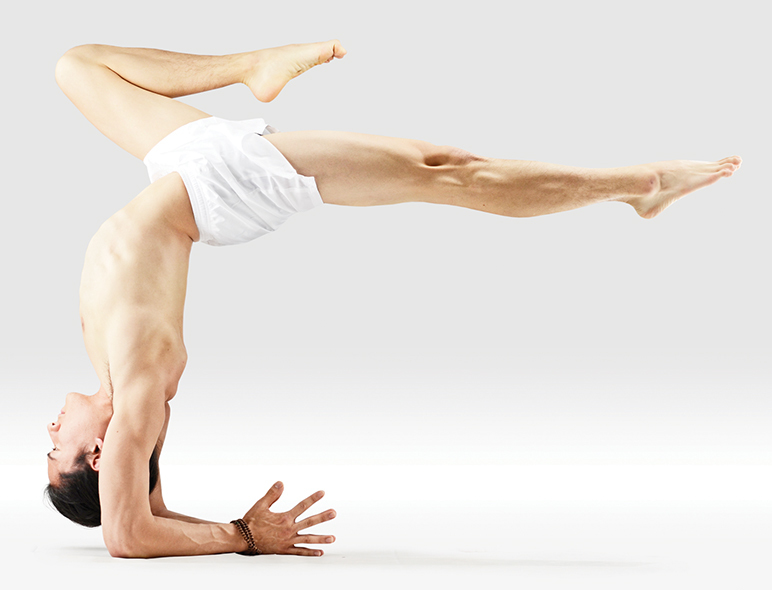 |
| Roberto Busconi at Yoga Mon Amour, CC BY-SA 4.0, via Wikimedia Commons Uttanasana -Standing Forward Bend |
These days, psychotherapy and medicine prescriptions include yoga.
Studies have shown that yoga improves mental clarity, lowers blood pressure, and reduces stress, but it is more than just a collection of instructions explaining how the human body can stay fit and live a happy and longer life. It gives guidelines on how to put the yoga philosophies into practice.
Yoga systems have 5,000 years of historical information that can be used as a therapeutic modality. It aids in the healing of numerous stubborn illnesses that make life difficult.
Yoga is a traditional wisdom that originated in
 |
| Benjamin J. DeLong, CC BY 2.0, via Wikimedia Commons |
Camel Pose, Ustrasana: The posture known as Camel Pose is one of the difficult poses and has several benefits. If done regularly, it helps with diseases of certain muscles and back pain. You would not find it very difficult after one or two weeks. The yoga posture of the Bow Pose is similar to this pose. But that is done by positioning our bodies differently. Here, the step-by-step instructions are given.
BALANCING HATHA YOGA POSES
WHAT IS HATHA YOGA?
While Hatha yoga combines physical postures, it upholds the importance of moral attitudes, too. It is a holistic approach to reducing mental stress and increasing the overall well-being of the human body and mind. In short, it tries to make our body a temple for living the sacred soul. Awakening of Kundalini and making each of its chakras activated is part of hatha yoga.
The objective of Hatha Yoga is to maintain a fine balance between the body and the mind. This task is done by giving specific postures known as yoga asanas, or yoga poses. This system of yoga is believed to have been devised in
INVERTED HATHA YOGA POSES
Plough Pose is an important posture in the system of Hatha Yoga. It is one of the three poses that are recommended to activate the ‘Manipur Chakra’ of Kundalini. Regular practice of this would result in the general health of the body and mind.
Raja Sarvangasana (Shoulder Stand): This is the much-practiced posture of Hatha Yoga. As it helps to create an increased flow of blood into the brain, it is very useful for increasing the power of remembering, too. For beginners, this pose might be a little bit difficult. But you would like to do it, as you can do other difficult postures like 'Halasana, the Plough Posture' from the shoulder stand pose. The beginners should not remain for more time in this pose, as it may cause neck problems for them.
BACK-BEND HATHA YOGA POSES
Peacock Pose, Mayurasana: As this is one of the difficult types of asanas, we should have prior knowledge about another easy asana. We can sit in Vajrasana, and after getting comfortable with doing the difficult poses, we can start doing Mayurasana. For beginners, it is advisable not to remain for more time in this pose. Whenever you feel pain, just stop and relax for a while.
 |
Mr. Yoga, CC BY-SA 4.0, via Wikimedia Commons |
If one practices these poses regularly, he or she will feel less stressed and full of energy during the day. In addition to toning the internal organs of our body, these postures help in curing ailments like hypertension and arthritis. It could help in keeping diabetes in control, too. However, the proportion of the benefit received might be different from individual to individual, depending on the age and general health of the person.
BENEFITS OF YOGA POSTURES
- Regularly doing yoga poses keeps our life energy flowing.
- Yoga is a healing system of theory and practice.
- Practicing yoga asanas would help to keep the energy meridians of our body open and in natural condition.
- Yoga poses are curative for certain pains, like back pain and pain in the hip joints. Regular practice of yoga helps to lose weight.
- Yoga is very helpful in keeping our nervous system operating naturally and peacefully. The regular practice of yoga asana would render our body and mind in a fairly balanced state.
- Many asanas and breathing techniques are devised to help the flow of blood in our body and cure the weakness of the heart. In addition to helping the functioning of our heart, yoga postures increase metabolism and give us more energy.
- The yoga system, theories, and practice can help us in curing or healing what has gone wrong in our body due to a faulty style of living. Yoga is a healing system of health care that is based on the concept of the "whole" person as one. It is based on the scientific concept that the human body, mind, spirit, and emotions can remain in balance by regular practice of yoga.
No comments:
Post a Comment